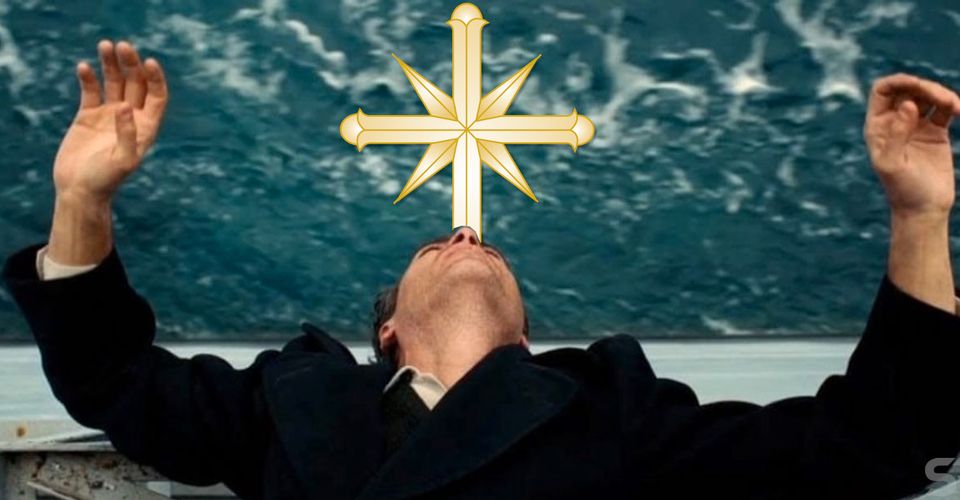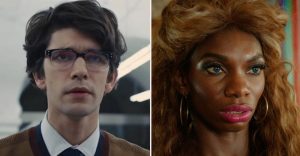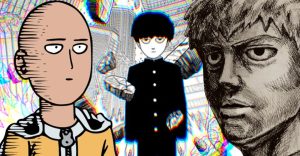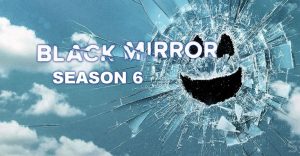The Master & Scientology: What The Movie Gets Right & Wrong About Cults

Paul Thomas Anderson’s disturbing, thrilling and throbbing epic The Master has been associated with the controversial religion known as Scientology since its release in 2012 – but in what ways does the film mimic or call attention to Scientology, and what does it get right about cults? While the film doesn’t star members of Hollywood’s elite who practice the religion – including Tom Cruise, John Travolta, Elizabeth Moss, Michael Peña, Juliette Lewis, and Giovanni Ribisi, to name a few – it does garner excellent performances out of Joaquin Phoenix, Philip Seymour Hoffman, Amy Adams, Laura Dern, and Rami Malek.
Set in the aftermath of World War II, The Master follows Freddie Quell (Phoenix), a traumatized veteran whose erratic behavior makes his journey back into post-war society all the more difficult. It doesn’t take Quell long to come in contact with the eccentric and charismatic Lancaster Dodd (Hoffman), the leader and founder of a philosophical movement known as “The Cause.” Dodd quickly spins Quell into his web, injecting and impressing the veteran with his strange, intoxicating beliefs.
At the time of its release, Hollywood producers JoAnne Sellar and Harvey Weinstein passionately denied any connection between The Master and Scientology, stating that the film was rather a commentary on the moral verboseness of post-war America. Since then, however, Paul Thomas Anderson himself has come forward and explained that Lancaster Dodd was indeed inspired by Scientology’s leader and founder L. Ron Hubbard, acknowledging that the real man “was a great character.” But the filmmaker also made it clear that he did not mean for The Master to be the filmic equivalent or companion to the cultic religion. While the extent to which that is true is, of course, dependent on one’s interpretation of the production. Regardless, there are many ties between The Master and Scientology.
The Leaders

There is a stark resemblance between the fictional character of Lancaster Dodd and the real founder of Scientology, L. Ron Hubbard. At the time of the film’s release, and perhaps even for some time before then, the press dutifully noted the physical characteristics shared between Hubbard and Oscar-winning actor Philip Seymour Hoffman. But the similarities between the two men stretch far beyond their outer appearances.
For instance, one of Lancaster Dodd’s primary responsibilities and occupations for “The Cause” is being an author. The vast majority of The Master takes place during the buildup to Dodd’s next book The Split Saber, referred to by members of The Cause simply as “Book Two.” During his time at the top of the religion, L. Ron Hubbard similarly spread his gospel through his books. The Church of Scientology was founded on the basis of his 1950 book Dianetics: The Modern Science of Mental Health, and is referred to by Scientologists as “Book One.” Before and during his time as the head Scientologist, Hubbard was also a prolific science-fiction novelist, having published nine novels and several short stories before officially founding Scientology in December 1953. In his lifetime, Hubbard would go on to write a total of 29 novels before his death in 1986.
In addition to their writing, Lancaster Dodd’s family life is similar to Hubbard’s as well. Having had multiple children with multiple wives, like Dodd, many of Hubbard’s most outspoken critics were his exes – a fact Amy Adams’ character, Dodd’s wife Amy, also alludes to when it comes to The Cause. Another interesting comparison comes in the form of Lancaster’s eldest son Val (Jesse Plemmons). During the movie, Val, though standing in line with his family, is also vocal about not believing in what his father is saying. In real life, L. Ron Hubbard Jr., after helping his father establish the church, later denounced him as a “fraud.”
The Master also includes Dodd’s passion for boats – a daunting inclusion that alludes to Hubbard’s Sea Organization, a fleet of boats that were cruelly staffed with young volunteers – as well as his eventual relocation to Britain. The latter mirrors Hubbard’s own transatlantic journey, where he moved to the English countryside in 1959. He lived and worked in a Sussex mansion called Saint Hill Manor.
The Practices

In The Master, the viewer is injected into the rituals of The Cause as Freddie is introduced, inducted, and questioned by the movement. During these scenes, Joaquin Phoenix displays an incredible range of physical and emotional turmoil, haggardly pacing around the room or impatiently trying to dissect his brain sitting in a chair. The primary procedure used throughout The Master and implemented onto Freddie is called “processing.” This is a direct parallel to Scientology, where the strange practice uses probing questions and other unique techniques to identify and diminish the power traumatic memories (or “engrams,” as they are referred to in the film) have inside one’s mind.
While Paul Thomas Anderson changed the name from auditing to processing, he hardly changed any of the questions involved during the interrogation; most of the questions Dodd asks Quell throughout the film can be found verbatim in the “Oxford Capacity Analysis” test Scientology uses to recruit its members. Among those included are “[1] Do you make thoughtless remarks or accusations which later you regret?” “[8] Are your actions considered unpredictable by other people?” “[21] Do your past failures still worry you?” and “[100] Are you logical and scientific in your thinking?”
Beyond “processing,” one other practice that occurs once in the film – something that Dodd calls “Pick a Point” – is rooted in an event in Hubbard’s life. In the film, “Pick a Point” involved choosing a point deep into the horizon and racing there as fast as possible on a motorcycle. In Spain in 1974, L. Ron Hubbard similarly crashed a motorcycle, breaking his arm and several ribs.
The Beliefs

Of course, centered in both The Master and Scientology is a corruptible and intoxicating belief system. Though Dodd never lays out his entire philosophy in The Master, there are enough pieces scattered throughout the movie that can be connected to Hubbard’s well-known and well-documented theology.
For instance, The Cause, like Scientology, promotes the notion of reincarnation and that, through the “processing” procedure, followers may be able to recall past lives. Like some Scientologists’ experiences, these past lives may go back billions, maybe even trillions of years – a criticism Dodd encounters by one skeptic.
Also, one of the ideas that Dodd frequently mentions is that “man is not an animal,” but a spirit that can reach “a state of perfect.” This echoes a pillar in the Church of Scientology’s own approach to the human condition. So again, while The Master and Scientology may not be perfect matches, there are certainly an incredible number of similarities between the two, perhaps enough to establish the Paul Thomas Anderson film as the companion he hadn’t intended the film to be.
About The Author


















